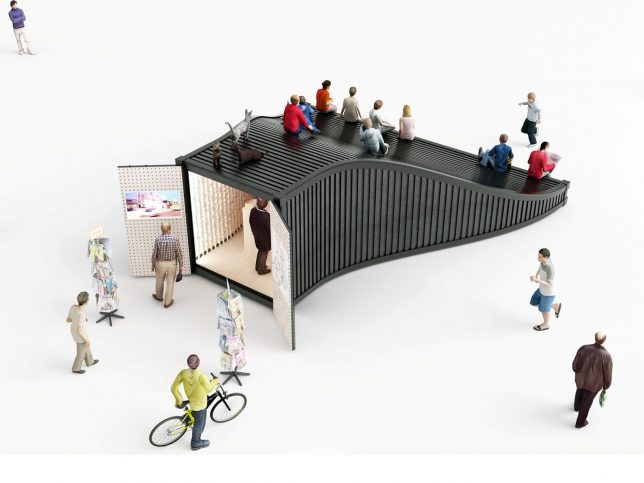Temporary Housing for Mumbai’s Overpopulated Dharavi Slum
Towering high into the sky, this structure by Ganti + Associates won an international competition to provide temporary housing for Mumbai’s overpopulated Dharavi Slum. The framework shelters 10 stories of individual shipping crate housing, staggered on top of each other to provide stepped outdoor spaces. The design elevates housing high above the narrow four-foot-wide streets in the settlement. “With sustainability in mind, each container can be reclaimed from Mumbai’s nearby ports,” say the architects. “Recycled, locally produced terra-cotta bricks would be used to form the screens lining the building’s open corridors. Simple bolted connections can allow for quick and easy assembly. Units are staggered horizontally to maximize the surfaces getting natural daylight. And, solar panels are integrated into the building’s south and west elevations, as well as micro wind turbines, to generate energy.”
Warped and Re-Shaped Containers for Seoul’s Design District
NL Architects imagines how we could push the usage of shipping containers even further by stretching and warping their proportions to create a series of kiosks to activate public space surrounding the new Dongdaemun Design Plaza by Zaha Hadid. Though they don’t say exactly how they would go about physically transforming the crates, the architects explain that “in the presence of Zaha all matter seems to become fluid… even the most rigid of forms turns malleable, pliable, soft.”
Shipping Container Public Restroom in Mumbai
In its finished state, it’s hard to tell that this shiny structure off a highway in Mumbai, India, was made with a shipping container as its base. Created by architect Rohan Chavan, the building functions as a public restroom for women in the shelter of a tree to keep it cool. Modest as it is, it presents a good example of how these crates can form the basis of inexpensive modular structures with a wide variety of usages.








